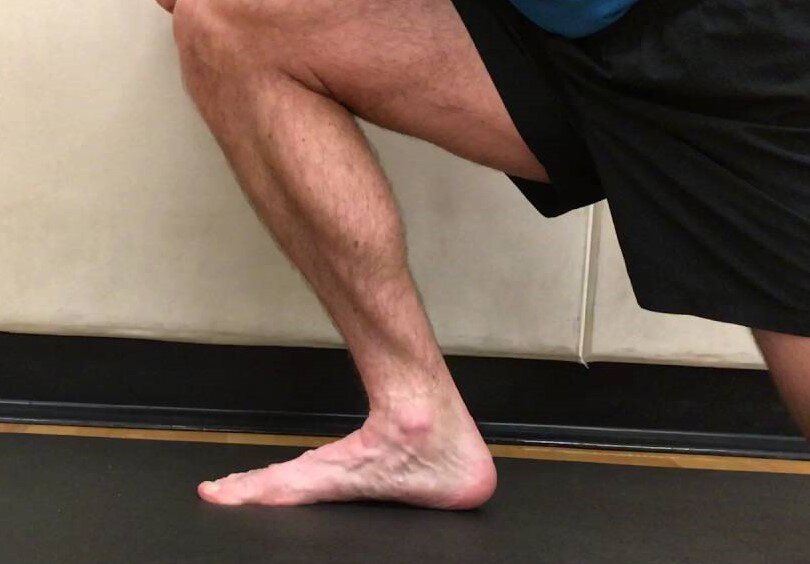Why tight ankles can cause knee pain. [video]
A common situation in the body is one where your pain and the actual problem are not the same part of the body. Once of the reasons people deal with chronic pain is because they only treat their symptoms and never address the actual problem.
This happens all over the body but I am going to talk about your ankles to day. Why the ankles, read on, kemosabe.
Many people want to start exercising so they grab their favorite pair of sneakers and hit the streets.
Don’t just start running.
Maybe you were never much of a runner. You decide to join a gym. Or maybe you already belong to a gym but visit it “occasionally”. You think about taking some strength training class the gym offers.
Don’t just start jumping.
It’s day one and you are squatting, lunging, pushuping and jumping more than you have in months. You feel like a dishrag when you are done. You are on your way, right?
Wrong!
Start by knowing your current limitations.
If you jump into an exercise routine (whether you are solo, with a trainer or taking some classes) without a proper assessment, you are playing with fire, scarecrow.
One of the more common limitations that happens when you are sedentary or exercising incorrectly is ankle tightness, also know as ankle hypomobility.
This not just something you stretch away with some half-assed stretches. The actual joint is restricted and does not move like it needs to. The motion that is often restricted is known as dorsiflexion (DF).
Think about pulling your foot up towards your leg.
You also get a DF-type movement when you are walking and running. We need a certain amount of DF to walk normally and more to run.
In this version, the foot is on the ground and the lower leg (tibia) shifts forward over the foot.
What does this all mean?
I am glad you asked.
Ankle mobility issues are common. When the tibia cannot move over the foot like it is supposed to, [cue stormy clouds and ominous music] bad things start to take place.
The tibia shifts towards in the inside of the foot causing the arch to collapse.
This results in the knee collapsing in towards the other knee.
This is also associated with the hip kicking out creating a mess that looks something like this.
Now, this pic is pretty dramatic and you probably do not move into this position every time you move. But all of these motions are happening in some capacity.
Here’s the bad news. These motions feel normal to you. You won’t work to fix them because your body has adopted these are the normal way of moving.
You won’t change until the pain sets in.
If these motions are left unchecked, they will lead to pain. Probably not right away. But they will. Issues with ankle mobility could show up as:
pain in the foot or ankle
pain in the lower leg (medial tibial stress syndrome)
generalized knee pain but usually pain is on the inside of the knee
hip pain
and even low back pain
A simple but effective treatment.
A proper assessment would catch this right away and you would address ankle mobility issues before you got too far into the program.
If, however, you are dealing with some pain and need something to get you moving towards pain-free, this mobilization will help. Check it out.
The key to the mobilization is a proper setup. This is also something you want to be consistent with. Try performing 2-3 sets of about 30 pulses of the mobilization 2-3 times per day everyday for the first 7-10 days.
If you are having some issues with the ankles or some other part of your body, let’s chat and see how EBM can help.
Make sure you grab your FREE copy of the 7-Day Strength and Mobility Reboot or The complete neck and shoulder rehab guide.
Until next time,
Dr. Tom
Related posts:
Stop stretching your tight muscles.


